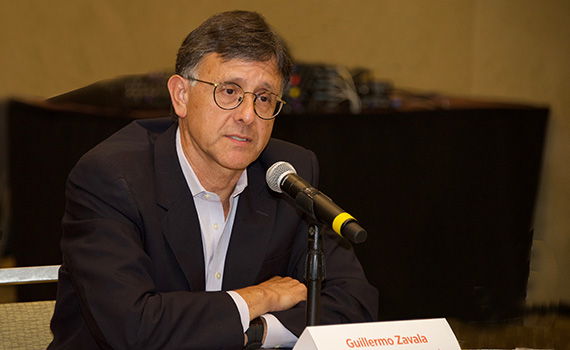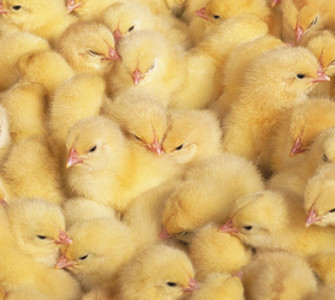Recombinant vector vaccines boon for industry but not all are the same
Recombinant vector vaccines have been rapidly adopted by the poultry industry and their use will continue to escalate, but they are not all the same, cautioned Guillermo Zavala, DVM, PhD, founder of Avian Health International, LLC.
The vaccines have garnered popularity because they are a convenient way to provide protection against more than one disease with a single dose. Most are administered at the hatchery where environmental factors like training, supervision and sanitation can be better controlled compared to field vaccination.
Recombinant vector vaccines are compatible with no-antibiotics-ever poultry production. They are also safe, with no reversion to virulence, and they do not cause reactions like those that sometimes occur with conventional live vaccines, said Zavala, also an adjunct professor, University of Georgia.
HVT most popular
The first recombinant vector vaccines for poultry emerged in 2006 and 2007. Among the different types now available, the most popular are those using the herpesvirus of turkeys (HVT) as the backbone, which protects against Marek’s disease (MD) and provides a vehicle or vector for carrying and expressing genes that stimulate protection against other diseases.
By 2019 and 2020, 58% of broilers and 78% of layers in the poultry-dense state of Georgia were vaccinated with a recombinant HVT that elicits protection against infectious bursal disease (IBD), Zavala reported.
The HVT-IBD recombinant vaccines have produced consistently good results and, in fact, have almost completely replaced the use of live IBD vaccines, especially in commercial layers. It’s “amazing,” Zavala commented, how the bursa remains almost intact throughout production in birds that receive this type of vaccine at the hatchery.
There is a perception in the industry that flocks receiving HVT-IBD vaccines have better flock uniformity, livability and fewer condemnations, although that may differ depending on the situation, he said, and noted that the vaccines are compatible with CVI-988 (Rispens) in long-lived birds.
Tradeoffs
Immunity initiated by recombinant vaccines may not be as quick or strong as attenuated live vaccines; it can take 3 weeks for full immunity against disease to develop after vaccination with a recombinant vaccine at the hatchery, and there is a tradeoff in that field-virus replication may still not be significantly reduced.
Using a recombinant HVT-infectious laryngotracheitis (ILT) as an example, Zavala said producers figure that if they vaccinate across the board with a recombinant HVT-ILT and an outbreak occurs, they will have a reduction in clinical signs and mortality — but their economic losses can still be less than the 2- to 4-point loss in feed conversion that can occur with a chicken-embryo-origin ILT vaccine — depending on the age birds go to market and the severity of the field challenge.
“When you do the numbers, it is really an attractive proposition,” he said.
Vaccine differences
Zavala emphasized that recombinant vector vaccines are not all the same nor do they perform the same in the field — something producers need to consider when selecting vaccines.
The vectored genes selected by different companies are not the same; the promoters used to boost immunogenicity aren’t the same nor is the insertion site among the different recombinant vector vaccines.
The site on the HVT genome used to insert genes to protect against additional diseases is critically important. Care must be taken to ensure it’s not placed in an area that will interfere with HVT replication and protection against MD, he explained.
There is also definitely a difference in terms of shedding that occurs after challenge. In a study he and colleagues conducted, viral shedding 3 days after challenge with a virulent ILT virus differed significantly depending on the recombinant vaccine birds had received. One finding was that less shedding occurred in birds that received an HVT-ILT vaccine compared to a recombinant fowlpox virus ILT vaccine whether the vaccines were administered in ovo or subcutaneously, albeit the protection provided by the fowlpox-vectored vaccine was also acceptable.
Correct use imperative
Recombinant vector vaccines must be used correctly, Zavala emphasized. They are dose-dependent, and he strongly advised against using reduced dosages because the result will be less protection.
HVT protects against MD and persists in birds, but it does not spread well horizontally. If some birds are missed during vaccination, that population of birds will not respond well.
Zavala also stressed that “vaccination without biosecurity is a weak formula for protection.” In addition, “biosecurity without vaccination is unrealistic for disease prevention.”
Despite all the benefits the recombinants bring to the poultry industry, there is room for improvement, he said, such as an earlier onset of immunity and protection against severe field challenges. Additional inserts would likewise be advantageous since a single dose of a recombinant could protect against even more diseases.
Nevertheless, recombinant vaccines are here to stay and they will continue to grow in popularity, which means the poultry industry worldwide will vaccinate more and medicate less, Zavala said.
Posted on April 10, 2022

















